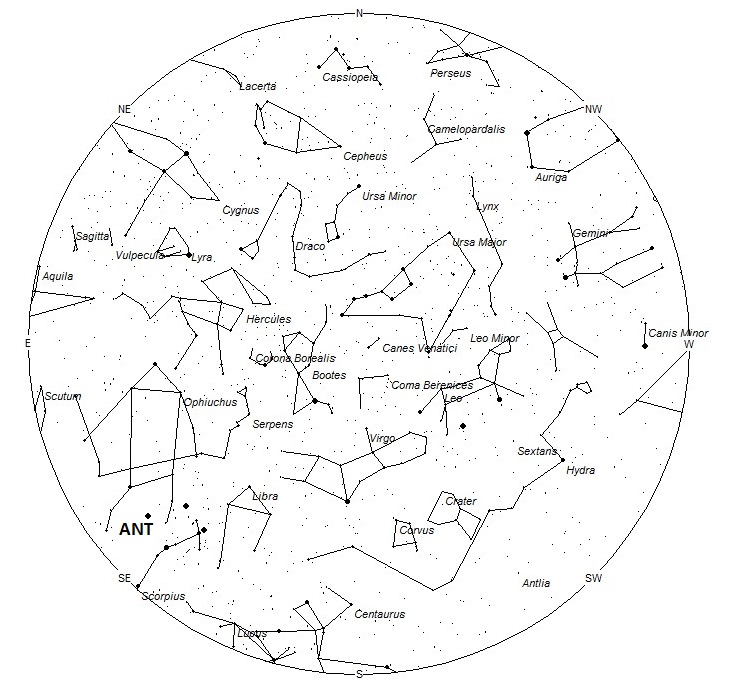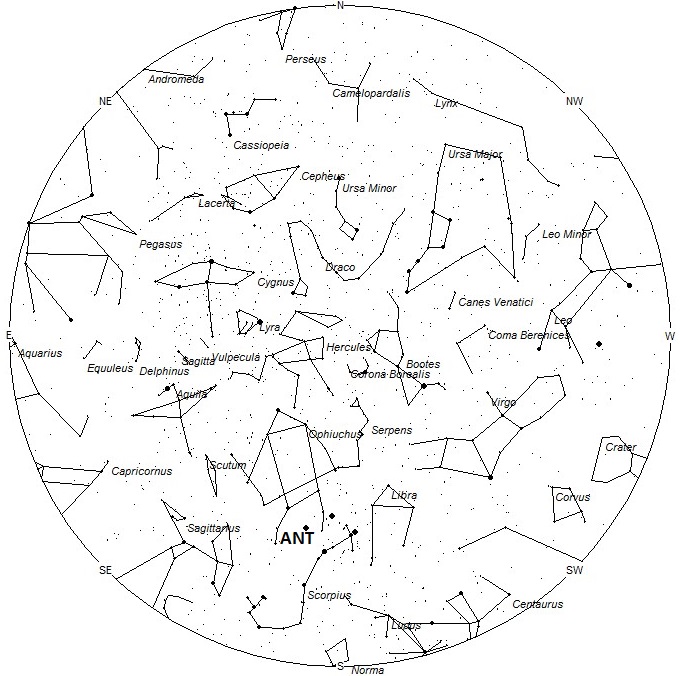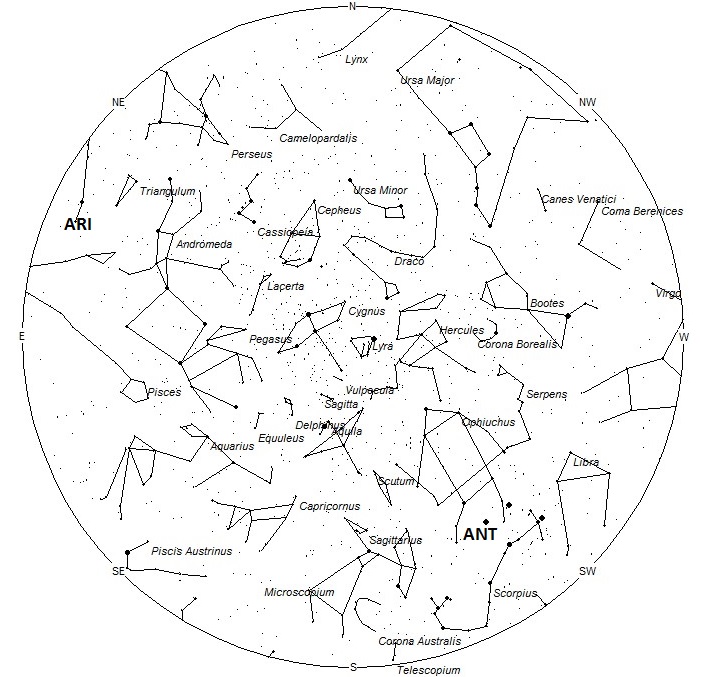
During this period the moon reaches its full phase on Saturday May 21st. This is the worst time to try and view meteor activity as the glare from the moon will obscure all but the brightest meteors. Conditions improve slightly as the moon wanes and rises later in the evening. Unfortunately early evening meteor rates are very low, moon or no moon. The estimated total hourly meteor rates for evening observers this week is near 2 for observers located in the northern hemisphere and 3 for observers located south of the equator. For morning observers the estimated total hourly rates should be near 4 as seen from mid-northern latitudes (45N) and 7 as seen from tropical southern locations (25S). The actual rates will also depend on factors such as personal light and motion perception, local weather conditions, alertness and experience in watching meteor activity. Rates are reduced during this period due to intense moonlight. Note that the hourly rates listed below are estimates as viewed from dark sky sites away from urban light sources. Observers viewing from urban areas will see less activity as only the brightest meteors will be visible from such locations.
The radiant (the area of the sky where meteors appear to shoot from) positions and rates listed below are exact for Saturday night/Sunday morning May 21/22. These positions do not change greatly day to day so the listed coordinates may be used during this entire period. Most star atlases (available at science stores and planetariums) will provide maps with grid lines of the celestial coordinates so that you may find out exactly where these positions are located in the sky. A planisphere or computer planetarium program is also useful in showing the sky at any time of night on any date of the year. Activity from each radiant is best seen when it is positioned highest in the sky, either due north or south along the meridian, depending on your latitude. It must be remembered that meteor activity is rarely seen at the radiant position. Rather they shoot outwards from the radiant so it is best to center your field of view so that the radiant lies at the edge and not the center. Viewing there will allow you to easily trace the path of each meteor back to the radiant (if it is a shower member) or in another direction if it is a sporadic. Meteor activity is not seen from radiants that are located far below the horizon. The positions below are listed in a west to east manner in order of right ascension (celestial longitude). The positions listed first are located further west therefore are accessible earlier in the night while those listed further down the list rise later in the night.
These sources of meteoric activity are expected to be active this week.
Detailed information on each source will continue next week when viewing conditions improve.
| SHOWER | DATE OF MAXIMUM ACTIVITY | CELESTIAL POSITION | ENTRY VELOCITY | CULMINATION | HOURLY RATE | CLASS |
|---|---|---|---|---|---|---|
| RA (RA in Deg.) DEC | Km/Sec | Local Daylight Saving Time | North-South | |||
| Anthelions (ANT) | – | 16:56 (254) -22 | 30 | 02:00 | 1 – 2 | II |
| Daytime Arietids (ARI) | Jun 07 | 01:48 (027) +21 | 42 | 11:00 | <1 – <1 | IV |
 American Meteor Society
American Meteor Society



May 25th, 2016, Kansas City, approximately 8:00pm more or less. Observed a huge fireball with very long trail moving NE to SW. Seemed to be at outermost atmosphere. Too large and wrong trajectory to b a jet trail Moved across eve sky in sight for about 2-3 minutes from our observation along I-435 W in Overland Park KS. What was this? Have not heard any news about this coming nor can find any info on web searches. Was it a comet, asteroid, satellite?
Marvin,
The long duration of your object eliminates the possibility of it being a meteor. A satellite can easily be visible this long but they do not leave trails. My guess is that you spotted a high altitude aircraft with a trail illuminated by the sun.
Robert Lunsford
I am so surprised you were able to see anything with all the torrentail rain and clouds until today. I wish I could have seen it. Looking or lucky stars in Edgerton Ks